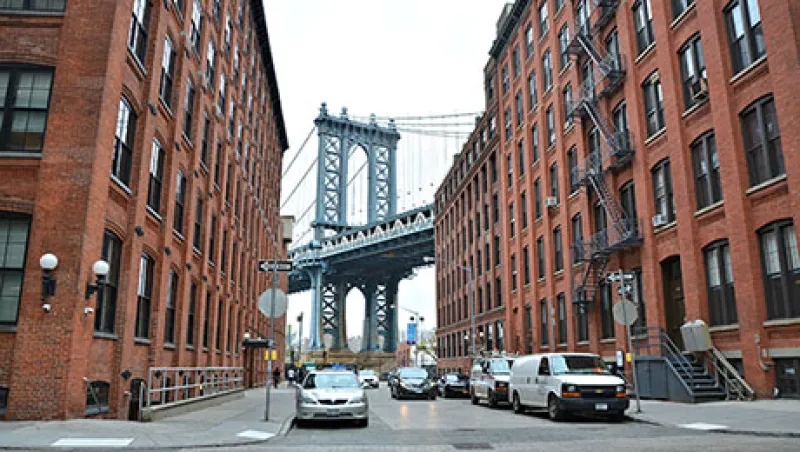
NEW YORK CITY - OCTOBER 15 2014: Manhattan bridge view from Brooklyn Dumbo neighborhood. Manhattan Bridge connects boroughs of Manhattan and Brooklyn over East River

NEW YORK CITY - OCTOBER 15 2014: Manhattan bridge view from Brooklyn Dumbo neighborhood. Manhattan Bridge connects boroughs of Manhattan and Brooklyn over East River